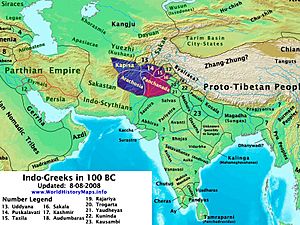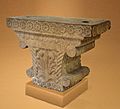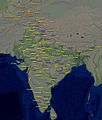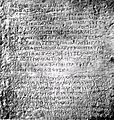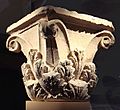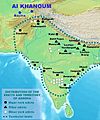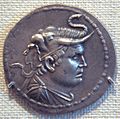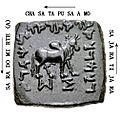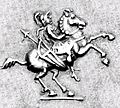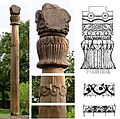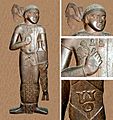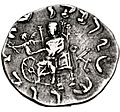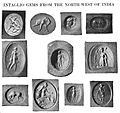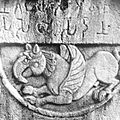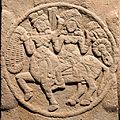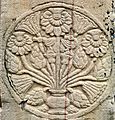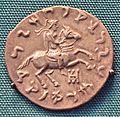Indo-Greek Kingdom facts for kids
The Indo-Greek Kingdom was a part of the ancient Greek Empire. It was located in parts of what is now northwest and northern Indian subcontinent (mostly Pakistan). This kingdom existed from about 180 BCE to around 10 CE. More than thirty Greek kings ruled this area one after another.
Contents
What Was the Indo-Greek Kingdom?
The Indo-Greek Kingdom was a special time in history. It was when Greek culture mixed with Indian culture. This happened after Alexander the Great's empire broke apart. His generals, called the Diadochi, took over different regions. One of these regions was Bactria, which was close to India.
How the Kingdom Started
The Indo-Greek Kingdom began when Greek rulers from Bactria decided to expand. They moved into the Indian subcontinent. The first major king to do this was Demetrius I of Bactria. He led his armies into India around 180 BCE. He wanted to take over parts of the Maurya Empire, which was weakening.
Early Greek Rulers in India
These early Greek rulers set up their own kingdom in India. They were called "Indo-Greeks" because they were Greeks ruling in India. They brought Greek ideas, art, and ways of life with them. But they also learned from the Indian people.
Important Kings and Their Rule
Many kings ruled the Indo-Greek Kingdom over the years. Some of them were very powerful and famous.
Menander I: A Great King
One of the most well-known Indo-Greek kings was Menander I. He ruled from about 155 to 130 BCE. He was a very successful military leader. He expanded the kingdom and was respected by both Greeks and Indians.
Menander and Buddhism
Menander is famous for his interest in Buddhism. He is mentioned in an ancient Buddhist text called the Milinda Panha. In this book, he has discussions with a Buddhist monk named Nagasena. This shows how Greek and Buddhist ideas mixed during his rule. Many of his coins also showed Buddhist symbols.
Other Notable Rulers
After Menander, the kingdom slowly started to shrink. Kings like Antialcidas and Strato I still ruled important areas. They continued to issue coins that showed both Greek and Indian influences.
The Last Indo-Greek Kings
The kingdom eventually split into smaller parts. The last known Indo-Greek kings were Strato II and Strato III. They ruled in the eastern parts of Punjab. Their rule ended around 10 CE. Other groups, like the Indo-Scythians, took over their lands.
Culture and Art in the Kingdom
The Indo-Greek Kingdom was a place where two great cultures met. This led to a unique blend of art, religion, and daily life.
Blending Greek and Indian Styles
Indo-Greek art often combined Greek and Indian styles. For example, statues might have Greek features but wear Indian clothing. This mix is seen in many sculptures and buildings from that time.
Coins as Historical Clues
The coins of the Indo-Greek kings are very important. They tell us a lot about their history. These coins often had Greek gods and kings on one side. The other side might have Indian symbols or writing. This shows how they tried to connect with both Greek and Indian people.
Religion and Beliefs
Many Indo-Greek kings were interested in Indian religions. Some, like Menander, showed interest in Buddhism. Others, like Heliodorus, became followers of Hinduism. This shows that people were free to follow different beliefs in the kingdom.
The Heliodorus Pillar
The Heliodorus pillar is a famous example of this. It was set up by a Greek ambassador named Heliodorus. He dedicated it to the Hindu god Vishnu. This pillar is a strong sign of the cultural exchange that happened.
End of the Indo-Greek Kingdom
The Indo-Greek Kingdom did not last forever. It faced challenges from new groups.
New Powers Emerge
Over time, groups like the Indo-Scythians and later the Kushan Empire grew stronger. They slowly took over the lands of the Indo-Greeks. The last Indo-Greek rulers lost their power.
Legacy of the Kingdom
Even though the kingdom ended, its influence continued. It helped spread Greek art and ideas into India. It also helped Indian culture and religions spread to the West. The Indo-Greek period was a fascinating time of cultural exchange.
Images for kids
-
Pataliputra Palace capital, showing Greek and Persian influence, early Mauryan Empire period, 3rd century BC.
-
Kandahar Bilingual Rock Inscription (Greek and Aramaic) by king Ashoka, from Kandahar, Afghanistan.
-
According to the Mahavamsa, the Great Stupa in Anuradhapura, Sri Lanka, was dedicated by a 30,000-strong "Yona" (Greek) delegation from "Alexandria" around 130 BC.
-
Greco-Bactrian statue of an old man or philosopher, Ai Khanoum, Bactria, 2nd century BC
-
Corinthian capital, found at Ai-Khanoum, 2nd century BC
-
Coin depicting the Greco-Bactrian king Euthydemus 230–200 BC. The Greek inscription reads: ΒΑΣΙΛΕΩΣ ΕΥΘΥΔΗΜΟΥ – "(of) King Euthydemus".
-
Greco-Bactria and the city of Ai-Khanoum were located at the very doorstep of Mauryan India.
-
Silver coin depicting Demetrius I of Bactria (reigned c. 200–180 BC), wearing an elephant scalp, symbol of his conquests of areas in what is now Afghanistan and Pakistan.
-
The coinage of Agathocles (circa 180 BC) incorporated the Brahmi script and several deities from India, which have been variously interpreted as Vishnu, Shiva, Vasudeva, Balarama or the Buddha.
-
Menander I (155–130 BC) is one of the few Indo-Greek kings mentioned in both Graeco-Roman and Indian sources.
-
Indian-standard coinage of Menander I with wheel design. Obv ΒΑΣΙΛΕΩΣ ΣΩΤΗΡΟΣ ΜΕΝΑΝΔΡΟΥ "Of Saviour King Menander" around wheel. Rev Palm of victory, Kharoshthi legend Māhārajasa trātadasa Menandrāsa, British Museum.
-
The Yavanarajya inscription discovered in Mathura, mentions its carving on "The last day of year 116 of Yavana hegemony" (Yavanarajya), or 116th year if the Yavana era, suggesting the Greeks ruled over Mathura as late as 60 BC. Mathura Museum.
-
Heliocles (145–130 BC) was the last Greek king in Bactria.
-
The Heliodorus pillar, commissioned by Indo-Greek ambassador Heliodorus, is the first known inscription related to Vaishnavism in India. Heliodurus was one of the earliest recorded Indo-Greek converts to Hinduism.
-
Foreigners on the Northern Gateway of Stupa I at Sanchi.
-
Hermaeus posthumous issue struck by Indo-Scythians near Kabul, circa 80–75 BC.
-
Tetradrachm of Hippostratos, reigned circa 65–55 BC, was the last Indo-Greek king in Western Punjab.
-
Hippostratos was replaced by the Indo-Scythian king Azes I (r. c. 35–12 BC).
-
Approximate region of East Punjab and Strato II's capital Sagala.
-
The last known Indo-Greek kings Strato II and Strato III, here on a joint coin (25 BC-10 AD), were the last Indo-Greek king in eastern territories of Eastern Punjab.
-
Evolution of Zeus Nikephoros ("Zeus holding Nike") on Indo-Greek coinage: from the Classical motif of Nike handing the wreath of victory to Zeus himself (left, coin of Heliocles I 145–130 BC), then to a baby elephant (middle, coin of Antialcidas 115–95 BC), and then to the Wheel of the Law, symbol of Buddhism (right, coin of Menander II 90–85 BC).
-
Indo-Corinthian capital representing a man wearing a Graeco-Roman-style coat with fibula, and making a blessing gesture. Butkara Stupa, National Museum of Oriental Art, Rome.
-
Indian-standard coinage of Menander I. Obv ΒΑΣΙΛΕΩΣ ΣΩΤΗΡΟΣ ΜΕΝΑΝΔΡΟΥ "Of Saviour King Menander". Rev Palm of victory, Kharoshthi legend Māhārajasa trātadasa Menandrāsa, British Museum.
-
Greek Buddhist devotees, holding plantain leaves, in purely Hellenistic style, inside Corinthian columns, Buner relief, Victoria and Albert Museum.
-
Seated Buddha, Gandhara, 2nd century (Ostasiatisches Museum, Berlin)
-
Cupro-nickel coins of king Pantaleon point to a Chinese origin of the metal.
-
Athena in the art of Gandhara, displayed at the Lahore Museum, Pakistan
-
The Indo-Scythian Taxila copper plate uses the Macedonian month of "Panemos" for calendrical purposes (British Museum).
-
Hellenistic couple from Taxila (Guimet Museum)
-
The story of the Trojan horse was depicted in the art of Gandhara. (British Museum).
-
Female riding a Centaur.
See also
 In Spanish: Reino indogriego para niños
In Spanish: Reino indogriego para niños


